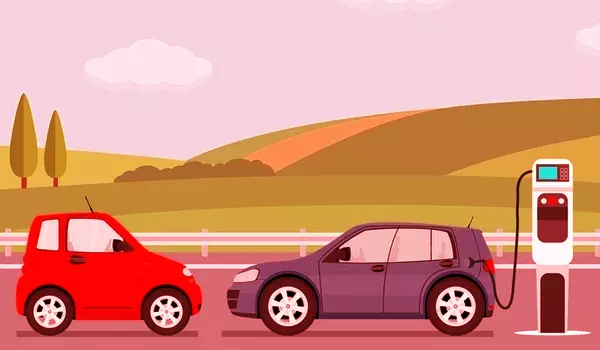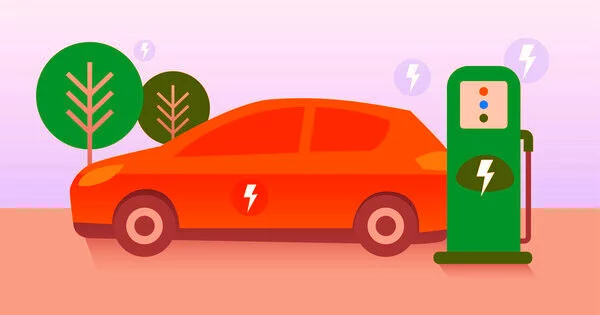Major automakers are ramping up production of electric trucks as a key strategy for lowering their vehicles’ greenhouse gas emissions. Light-duty vehicles, such as sedans, SUVs, and pickup trucks, currently account for 58 percent of greenhouse gas emissions in the US transportation sector. Pickup trucks accounted for 14 percent of light-duty vehicle sales in the United States in 2020, and both pickups and SUVs have increased their market share in recent years.
But what does the electrification of pickup trucks mean for the transportation industry’s decarbonization?
In a new study, researchers from the University of Michigan and Ford Motor Company examined the savings in greenhouse gas emissions compared to gasoline-powered pickup trucks. The study was published online in the journal Environmental Research Letters.
“This is a critical study for informing and encouraging climate action. Our research clearly shows that switching to electrified powertrains across all vehicle classes can result in significant reductions in greenhouse gas emissions “Greg Keoleian, a professor at the University of Michigan School of Environment and Sustainability and the director of the Center for Sustainable Systems, is the study’s senior author.
Researchers conducted a cradle-to-grave assessment of pickup truck life cycles and compared the implications of pickup truck electrification to those of sedan and SUV electrification in the study.
This research can help us understand the potential impact of electrification on emissions reduction, particularly as new electric vehicles are introduced, and how we can accelerate our progress toward carbon neutrality. We are honored to collaborate with the University of Michigan on this critical project.
Cynthia Williams
With a focus on evaluating greenhouse gas emissions, researchers examined three different model-year 2020 powertrain options for midsize sedans, midsize SUVs, and full-size pickup trucks: internal-combustion-engine vehicles, hybrid-electric vehicles, and battery-electric vehicles, accounting for differences in fuel economy, annual mileage, vehicle production, and vehicle lifetime across vehicle classes.
They discovered that battery-electric vehicles have approximately 64% lower cradle-to-grave life cycle greenhouse gas emissions than internal-combustion-engine vehicles on average in the United States for sedans, SUVs, and pickup trucks.
“This research can help us understand the potential impact of electrification on emissions reduction, particularly as new electric vehicles are introduced, and how we can accelerate our progress toward carbon neutrality. We are honored to collaborate with the University of Michigan on this critical project” Cynthia Williams, Ford’s global director of sustainability, homologation, and compliance, explained the company’s decision.
Several significant findings are presented in the study. For example, researchers discovered that replacing an internal-combustion-engine vehicle with a battery-electric vehicle results in a greater total tonnage of greenhouse gas emissions reductions as vehicle size increases, owing to larger vehicles’ higher fuel consumption.
Though the percentage savings is about the same across vehicle classes, on average, replacing an internal-combustion-engine sedan with a battery-electric sedan saves 45 metric tons of carbon dioxide equivalent; replacing an internal-combustion-engine SUV with a battery-electric SUV saves 56 metric tons of carbon dioxide equivalent; and replacing an internal-combustion-engine pickup with a battery-electric pickup saves 74 metric tons carbon dioxide equivalent over the lifetime of the vehicles, said study first author Max Woody, research specialist at U-M’s Center for Sustainable Systems.

The researchers also discovered that, due to battery production, battery-electric vehicles have higher greenhouse gas emissions than internal-combustion-engine vehicles, but this impact is offset by savings in operation. Based on the average U.S. grid and vehicle miles traveled, the break-even time for battery-electric vehicles and internal-combustion-engine vehicles is 1.2 to 1.3 years for sedans, 1.4 to 1.6 years for SUVs, and 1.3 years for pickup trucks.
“This study builds on previous research that compared battery-electric vehicle sedans to their internal-combustion-engine or hybrid counterparts,” Keoleian said. “We report emissions for vehicle production, use, and end-of-life stages on a per-mile basis and over the entire vehicle lifetime. Furthermore, we examined the regional variation in emissions in light of differences in electricity grid mixes and ambient temperatures, as well as the effects of grid decarbonization rate on emission reduction.”
Vehicle emissions vary across the country because different temperatures and drive cycles affect a vehicle’s fuel economy. The greenhouse gas emissions intensity of the local electricity grid is also an important factor for electric vehicles. The study created maps that show the lifetime grams of CO2 equivalent/mile for each powertrain (internal-combustion engine vehicles, hybrid vehicles, and battery-electric vehicles) and vehicle type (sedan, SUV, and pickup truck) by county across the United States.
Researchers found that public concerns about battery-electric vehicles having higher emissions than internal-combustion-engine vehicles or hybrids are largely unfounded, as battery-electric vehicles outperform hybrids in 95%-96% of counties, while battery-electric vehicles outperform internal-combustion-engine vehicles in 98%-99% of counties, even assuming only modest progress towards grid decarbonization.
Charging strategies can help to reduce emissions from battery-electric vehicles even more. According to the study, charging during the times of day with the lowest grid emissions intensity can reduce emissions by 11% on average.
“Deployment of electric vehicles and expansion of renewable energy resources such as solar and wind should occur concurrently,” Woody stated. “The development of one increases the benefit of the other.”














